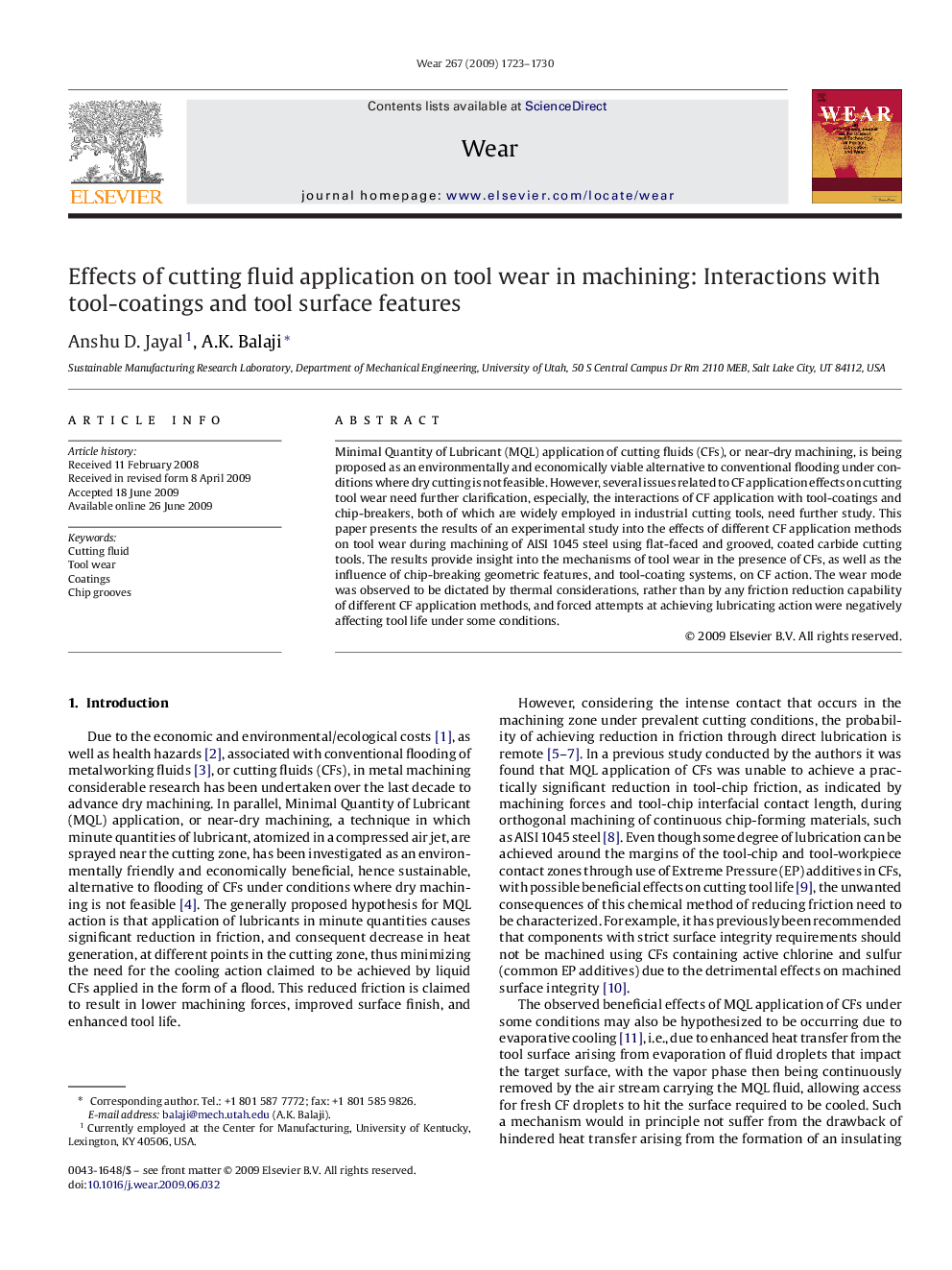| Article ID | Journal | Published Year | Pages | File Type |
|---|---|---|---|---|
| 618563 | Wear | 2009 | 8 Pages |
Minimal Quantity of Lubricant (MQL) application of cutting fluids (CFs), or near-dry machining, is being proposed as an environmentally and economically viable alternative to conventional flooding under conditions where dry cutting is not feasible. However, several issues related to CF application effects on cutting tool wear need further clarification, especially, the interactions of CF application with tool-coatings and chip-breakers, both of which are widely employed in industrial cutting tools, need further study. This paper presents the results of an experimental study into the effects of different CF application methods on tool wear during machining of AISI 1045 steel using flat-faced and grooved, coated carbide cutting tools. The results provide insight into the mechanisms of tool wear in the presence of CFs, as well as the influence of chip-breaking geometric features, and tool-coating systems, on CF action. The wear mode was observed to be dictated by thermal considerations, rather than by any friction reduction capability of different CF application methods, and forced attempts at achieving lubricating action were negatively affecting tool life under some conditions.
